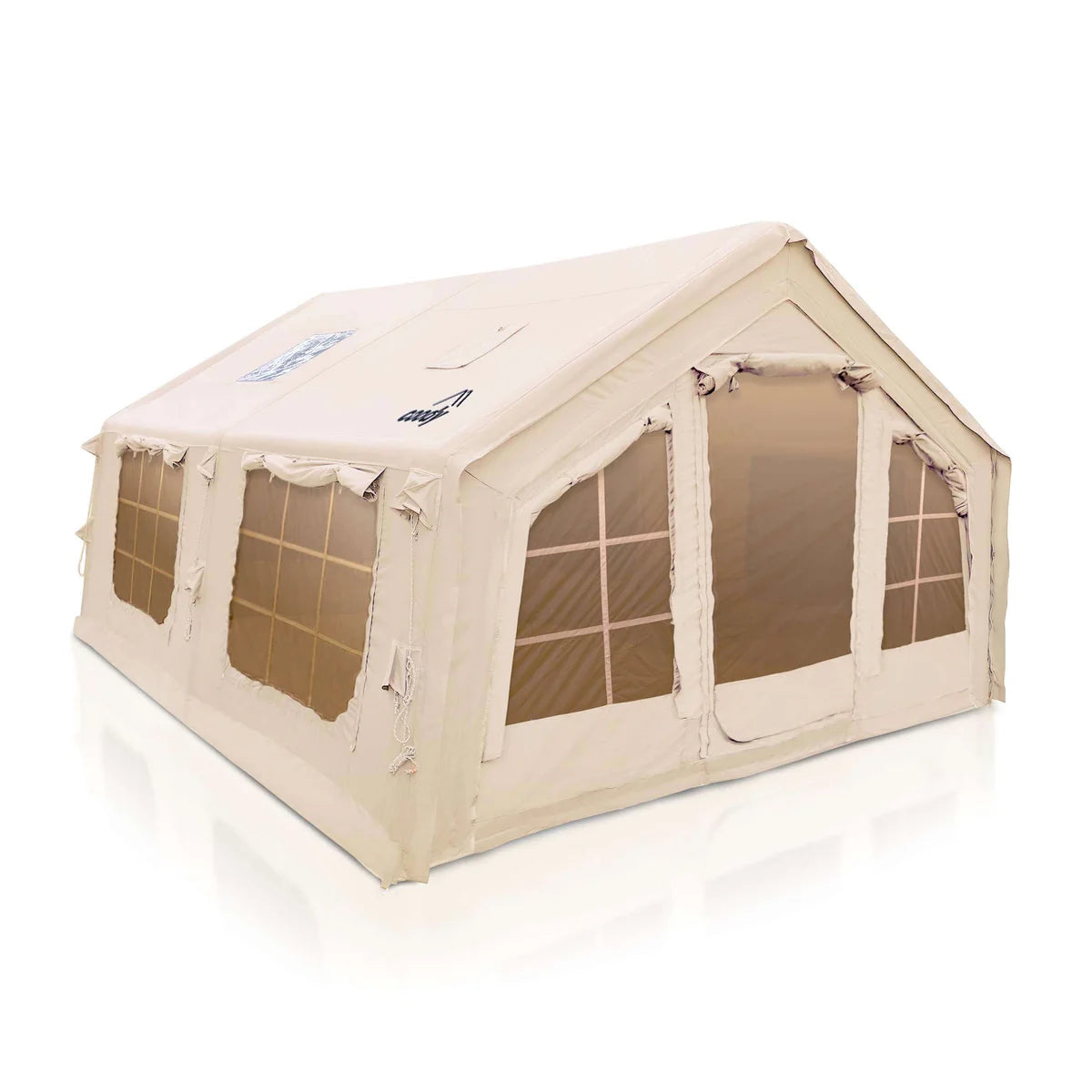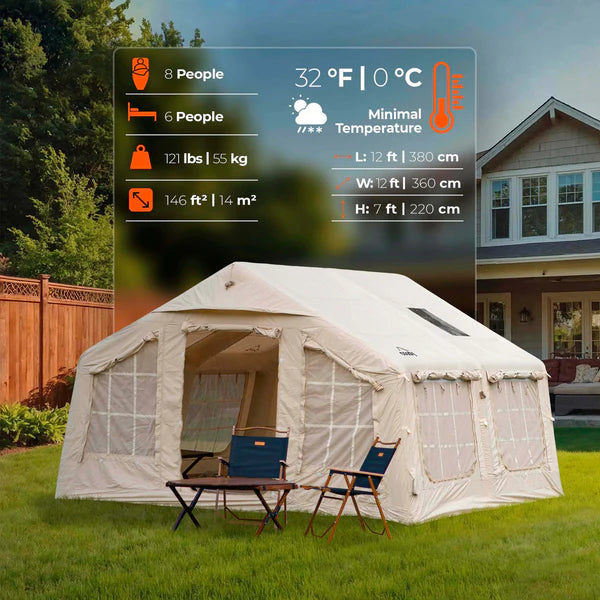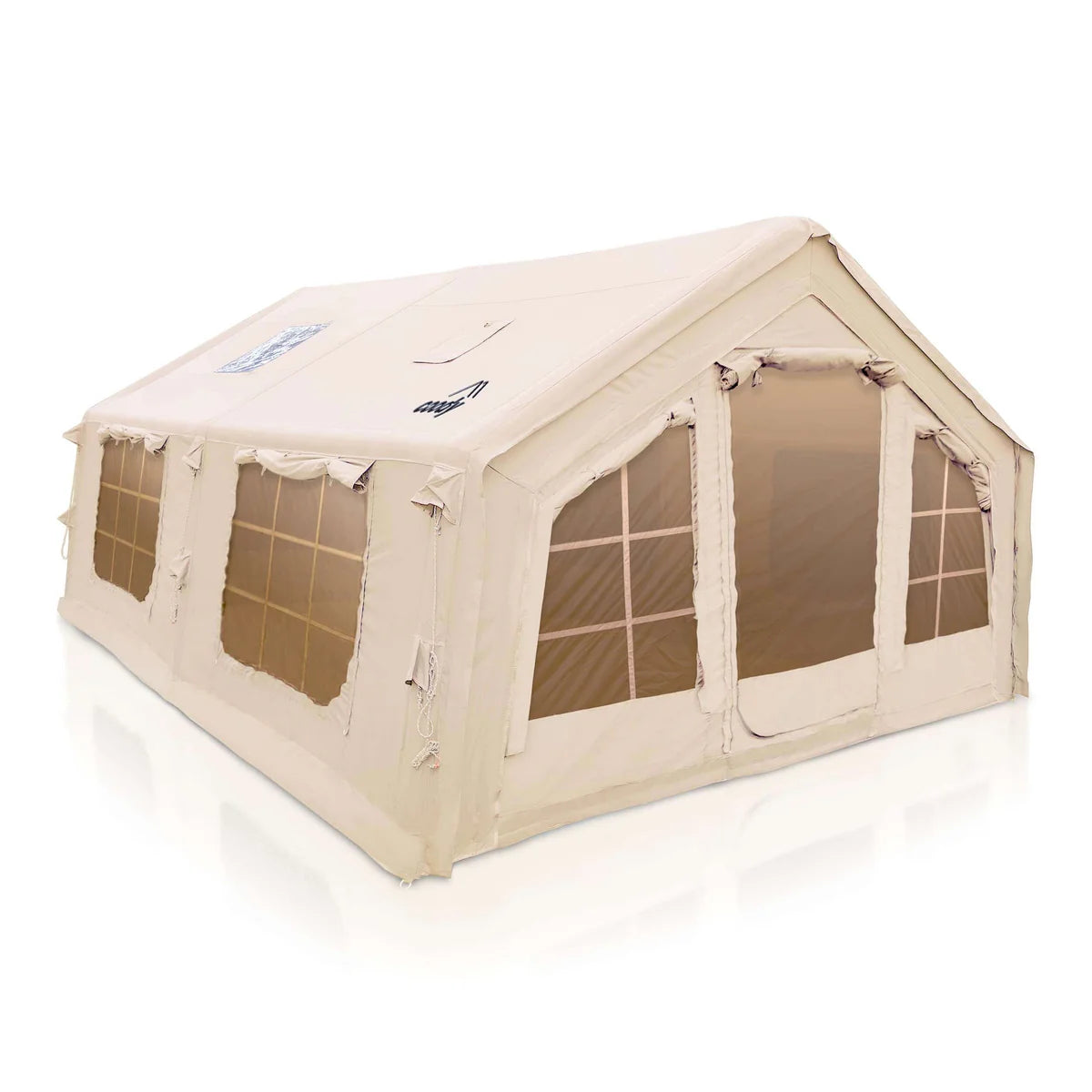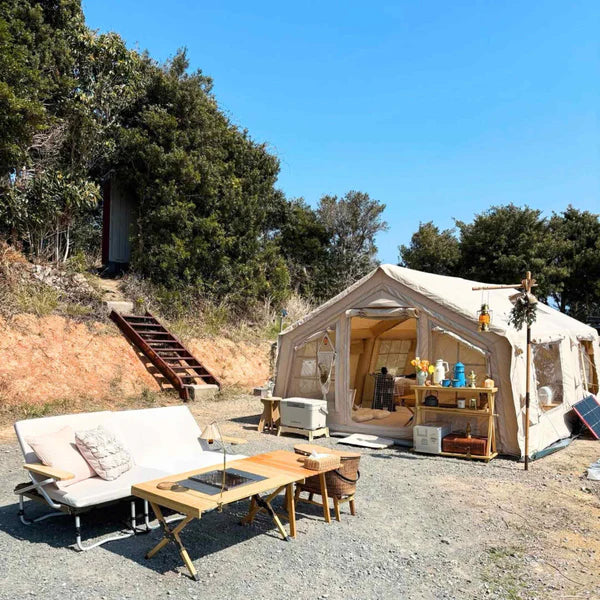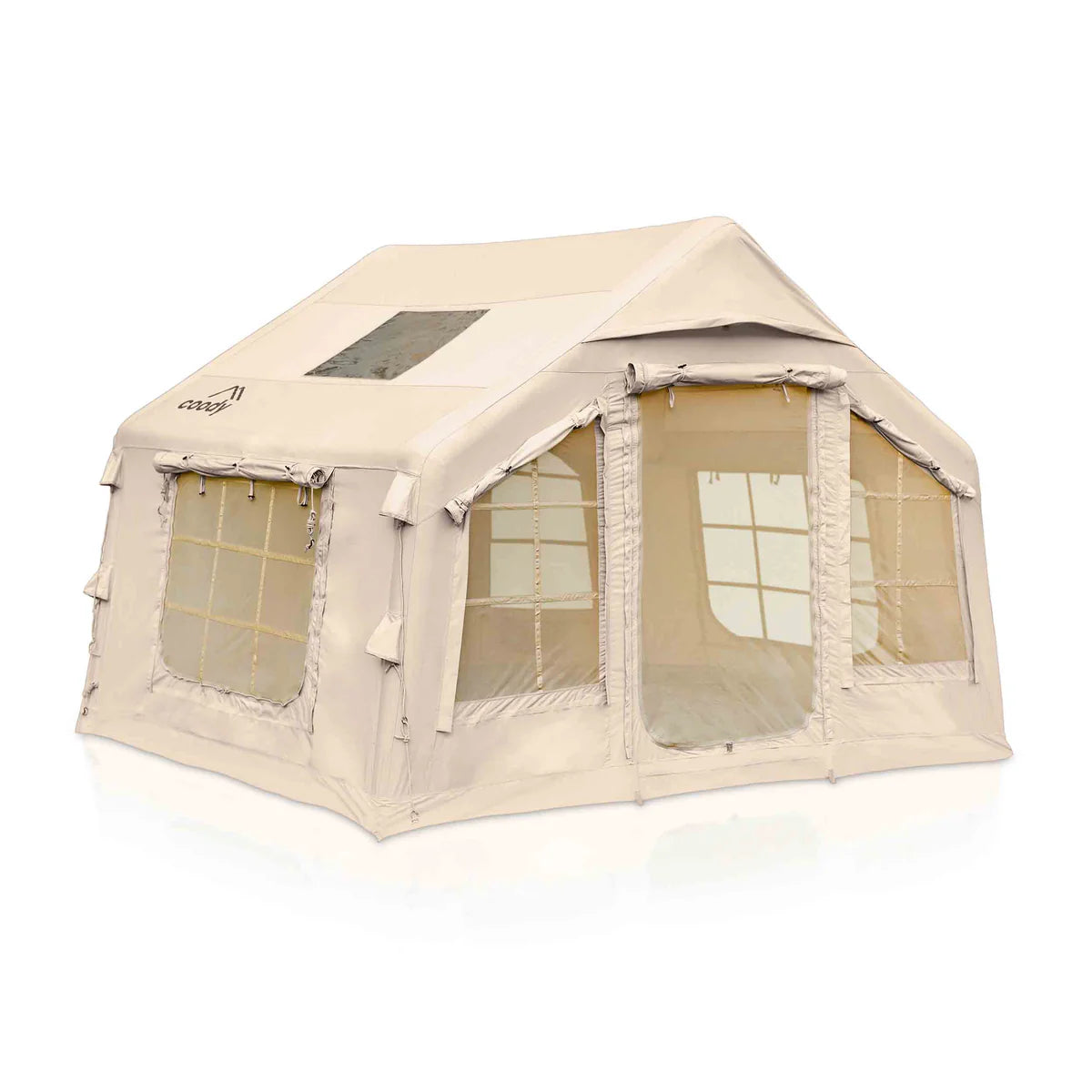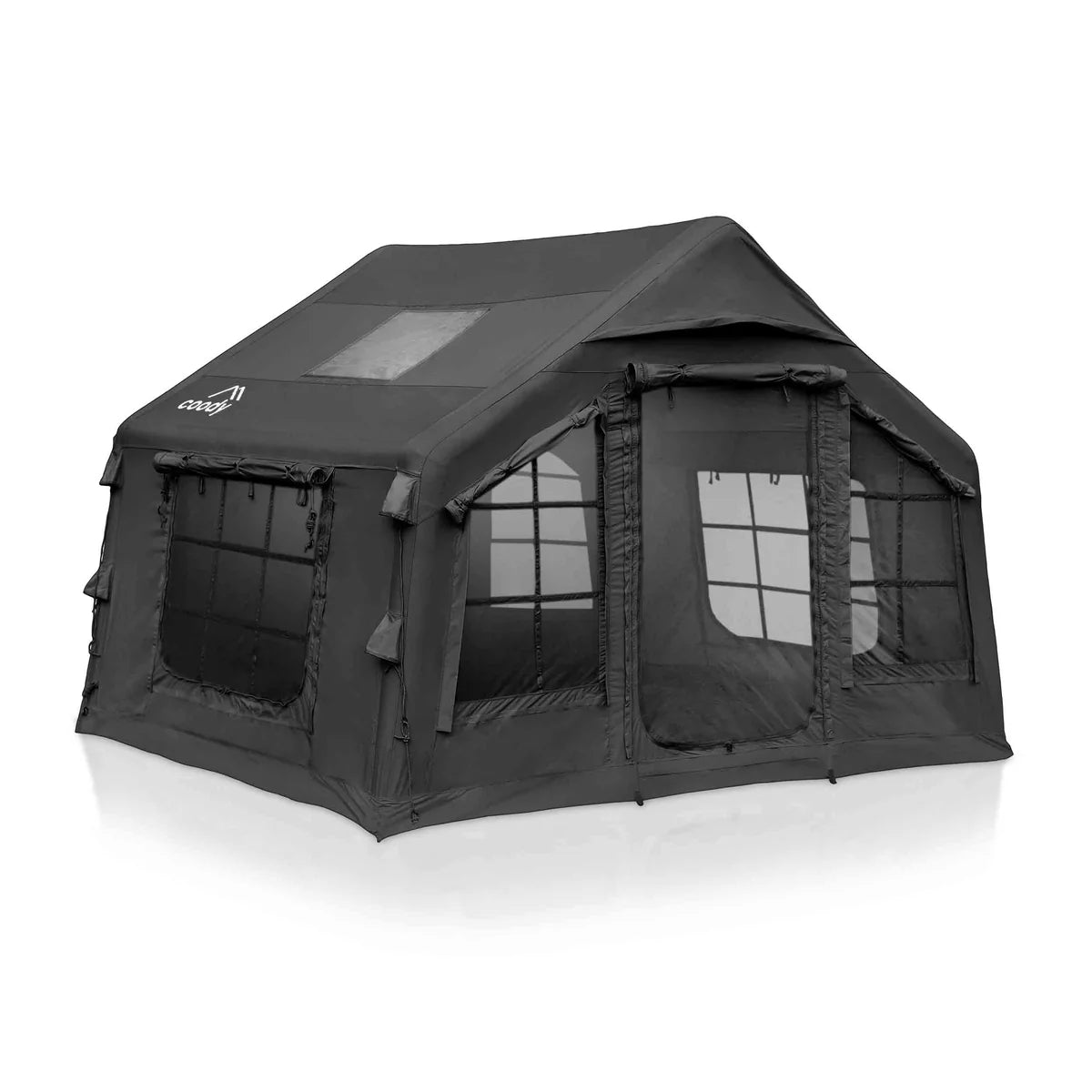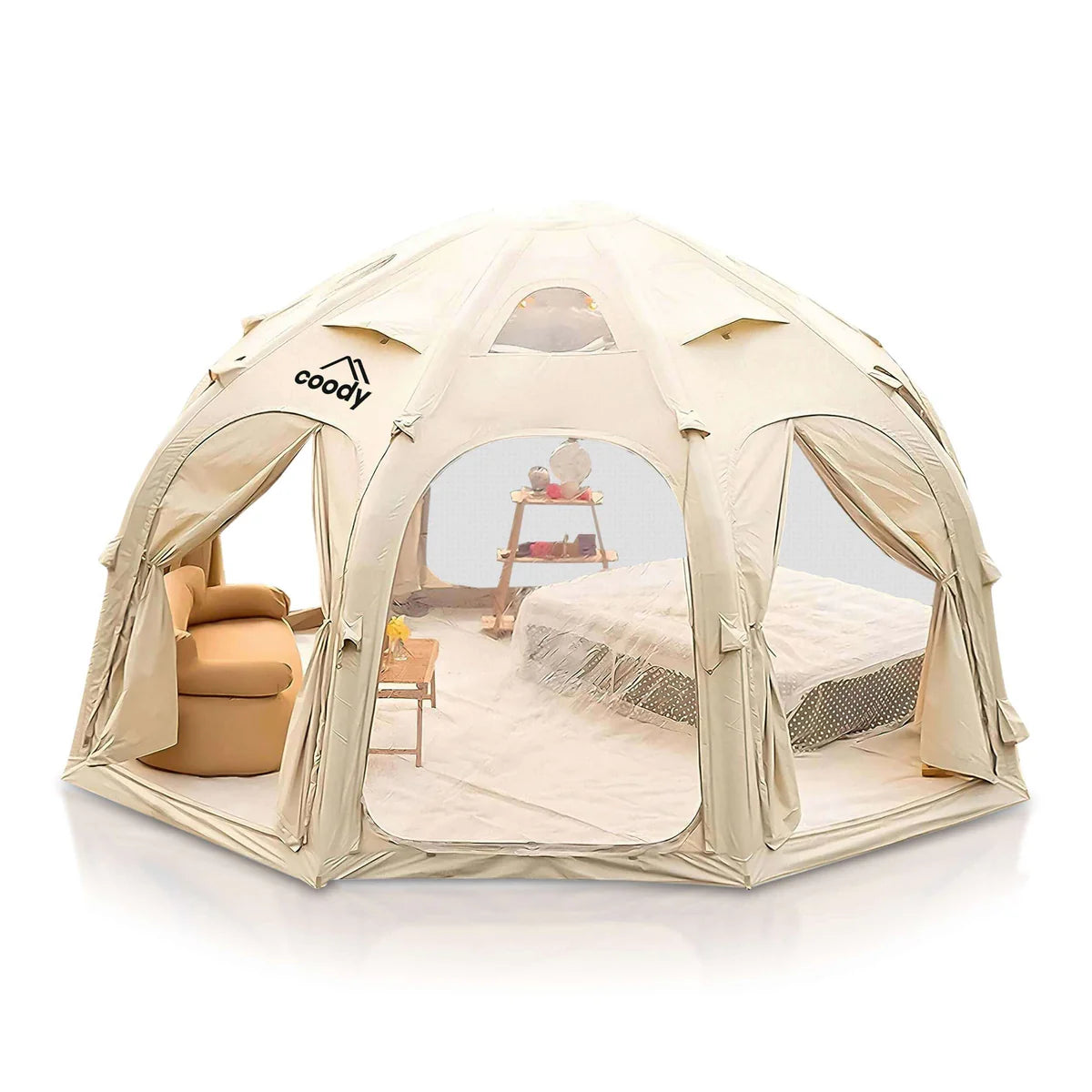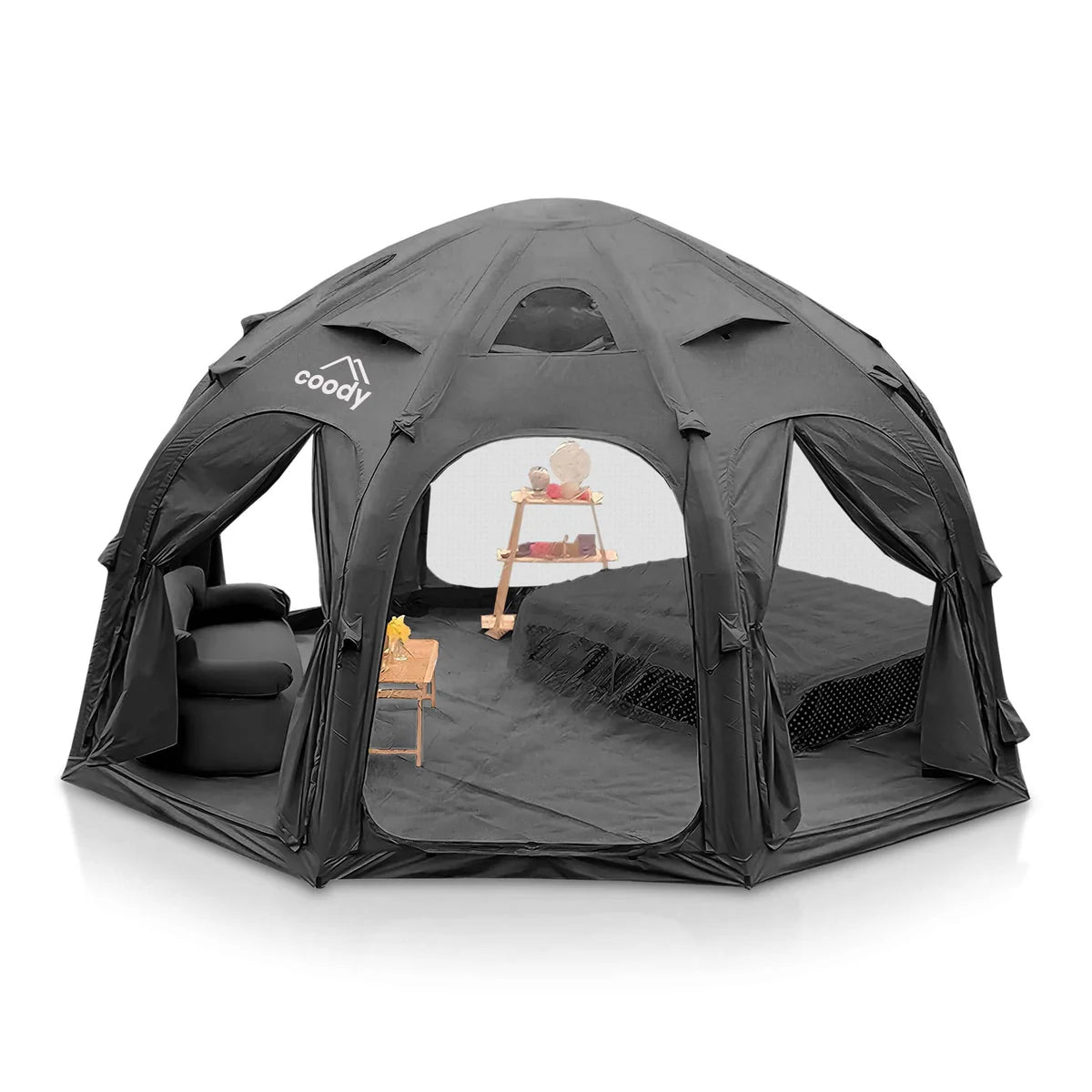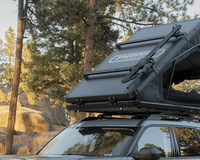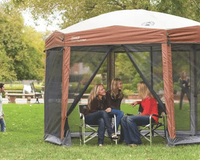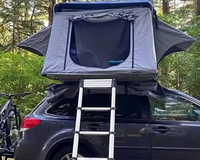Camping in the 21st century is no longer limited to rough nights on the ground or fumbling with poles in the rain. As outdoor gear evolves, inflatable tents have taken a front seat, offering rapid setup, structural reliability, and comfort once only found in traditional cabins. Among the most notable names in this space is Coody Inflatable Tent, a rising brand focused on designing tents that merge innovation with real-world usability.
Their product line of inflatable camping tents delivers on both durability and livability, serving campers who range from minimalist backpackers to luxury glampers. In this article, we’ll explore Coody's brand philosophy, take a detailed look at its three flagship products—the Coody 8, Coody 13.6, and Coody 17.2 Beige—and explain how these tents can transform the outdoor experience.

The Philosophy Behind Coody’s Design
Coody tents are built around three core principles: convenience, comfort, and adaptability. Rather than continuing the decades-old pole-based design of camping shelters, Coody embraces air-supported architecture. Inflatable frames remove the need for rigid metal or fiberglass poles, reducing setup time to under five minutes in most cases. More importantly, they simplify the camping experience for families, solo travelers, and first-time campers alike.
Each tent is crafted from heavy-duty, waterproof, and breathable TC canvas (a cotton-polyester blend), which offers better insulation than synthetic tents and a much more natural interior climate. Heat retention during colder nights, breathability in humid conditions, and reduced condensation are key advantages. Whether camping in a national park, attending a weekend music festival, or living off-grid for weeks, Coody tents are tailored to support modern outdoor lifestyles with little compromise.
Quick Overview: What Sets Inflatable Tents Apart?
Unlike traditional tents that require multiple people to set up with an array of poles and stakes, inflatable tents use integrated air beams to form their structural frame. These beams are inflated using a manual or electric pump and maintain rigidity once filled. Benefits include:
Rapid setup time (often under 5 minutes)
Improved wind resilience, as air frames flex under pressure
No broken poles or complex hardware
Easier repairs in the field
Additionally, inflatable structures lend themselves to more vertical sidewalls and taller ceilings, maximizing usable interior volume. For families or taller campers, this design greatly improves long-term livability.
Product Highlights: Coody’s Tent Lineup
Let’s take a closer look at Coody’s standout inflatable tent models. These products represent three scales of use—from small group camping to multi-person glamping—each packed with its own strengths.

Coody 8 Inflatable Tent House for Camping
Compact yet functional, the Coody 8 is built for campers who prioritize portability and speed. Offering 7.2 m² (approx. 77 ft²) of space and standing room for most adults (2.05 m ceiling height), this tent is ideal for 2 to 4 people. The structure is supported entirely by inflatable beams and can be fully deployed in less than five minutes.
This model features two wide doors, a built-in stove jack for use with wood-burning stoves, vertical walls for usable corner space, and large TPU windows that allow for sunlight while maintaining insulation.
Key Advantage: The most portable and quick-deploy tent in the lineup—perfect for solo campers, couples, or minimalist travelers.
Coody 13.6 Inflatable Tent for 2–8 Person
For those needing more space, the Coody 13.6 presents a mid-size option with 13.6 m² (146 ft²) of interior floor space and a 2.1 m tall ceiling. It comfortably fits up to eight people with sleeping bags, or four to six with air mattresses. A removable center divider transforms the single-room tent into a dual-room space for privacy—an excellent feature for family outings or shared group use.
Durable PVC flooring lines the bottom of the tent, while the thick TC canvas resists UV exposure and water penetration. The large windows and ceiling ventilation maintain airflow even in hotter climates, and the integrated stove jack keeps things warm when temperatures drop.
Key Advantage: A versatile middle ground for families or glamping setups, offering privacy and comfort in a robust four-season shell.
Coody 17.2 Beige Inflatable Tent for 2–10 Person
The Coody 17.2 is the largest tent in the brand’s current inflatable line, offering a massive 17.2 m² (185 ft²) interior space that supports 2 to 10 people. With two separate entrance points, six windows, and two large interior zones, the 17.2 is best described as a mobile canvas home. It features everything you’d expect in a luxury tent: double-room layout, high breathability, integrated stove jack (10 cm opening), and robust weatherproof canvas construction.
Its 66 kg weight makes it better suited to car camping or stationary basecamps, but what it lacks in packability, it makes up for in liveability and all-season resilience.
Key Advantage: Ultimate glamping and family-camping solution with full-size layout and extreme weather adaptability.
Side-by-Side Product Comparison
|
Model |
Sleeping Capacity |
Floor Area (m² / ft²) |
Height (m) |
Weight (kg / lbs) |
Stove Jack |
Best Use Case |
|
Coody 8 |
1–4 people |
7.2 / 77.5 |
2.05 |
~32 / ~70 |
Yes |
Solo/duo camping, fast-deploy shelter |
|
Coody 13.6 |
2–8 people |
13.6 / 146 |
2.1 |
55 / 121 |
Yes |
Small families, private dual-room camping |
|
Coody 17.2 |
2–10 people |
17.2 / 185 |
2.1 |
66 / 145 |
Yes (10cm) |
Group expeditions, glamping, basecamps |
Beyond the Specs: Practical Applications and Real-World Use
While specs and dimensions help with comparison, Coody’s value becomes more evident in real-world use. Their tents are designed to meet diverse needs:
For glamping: The 17.2 model transforms into a canvas lodge complete with internal rugs, tables, and wood-burning stoves.
For family road trips: The 13.6 is ideal for car-based camping with kids, offering separation and comfort.
For minimalist backpackers or couples: The Coody 8 offers just enough space while keeping things lightweight and mobile.
These tents are especially attractive to campers looking to extend their season beyond summer. With wood stove compatibility and well-insulated canvas, they’re suitable for use even in sub-zero conditions, as long as proper heating and ventilation are maintained.

Coody’s Approach to Quality and Longevity
Unlike mass-market tents that compromise on material to cut cost, Coody emphasizes longevity. Their canvas is not only Sun-proof and water-resistant, but also mildew-treated, which significantly extends its lifespan in variable climates. Zippers are oversized and reinforced, and seams are double-stitched for tension handling. Even the TPU windows are crack-resistant under cold temperatures, a feature lacking in many competitors.
Inflation valves are industrial-grade, and all kits include high-volume pumps, tie-down ropes, steel stakes, and heavy-duty storage bags. These aren't throwaway tents for a single season—they’re built for years of regular use.
Final Thoughts: Why Choose a Coody Inflatable Tent?
For campers who seek more than just a place to sleep, Coody tents offer a hybrid experience between traditional tenting and cabin-style shelter. The ability to stand up, walk around, divide space, and heat the interior opens new opportunities for cold-season travel, long-term site stays, and multi-generational camping.
With three clearly differentiated models, Coody has options that suit nearly every type of camper. Whether you're backpacking with a partner or hosting a group at a festival, their inflatable tents redefine what's possible in the wild.



